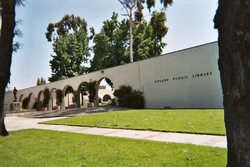The Evolution of Heel Cushioning Systems in Upland, California
Introduction
Nestled in the heart of Southern California lies the city of Upland, a community known for its picturesque landscapes and vibrant local industry. Among the various sectors contributing to Uplands economic fabric, one stands out for its unique blend of innovation and practicality: the development and refinement of heel cushioning systems. These systems, designed to enhance comfort and reduce the impact on feet during physical activities, have undergone significant evolution over the years. This essay explores the history, technological advancements, and the impact of heel cushioning systems originating from Upland, California.
Historical Background
The journey of heel cushioning systems in Upland can be traced back to the early 20th century when shoemakers and local entrepreneurs sought ways to improve footwear comfort. During this period, the primary focus was on creating simple padding solutions using rudimentary materials like cotton and leather. These early attempts, though basic, laid the groundwork for more sophisticated designs.
As the decades progressed, the demand for more effective cushioning grew, driven by an increase in recreational activities and a heightened awareness of foot health. By the mid-20th century, Upland had become a hub for innovative shoemakers who experimented with different materials and designs, leading to a gradual shift from simple padding to more advanced cushioning systems.
Technological Advancements
The significant technological advancements in heel cushioning systems began in the late 20th century, coinciding with the rise of athletic footwear. As global interest in sports and fitness surged, so did the demand for shoes that could provide superior comfort and support. Upland, with its burgeoning community of manufacturers and innovators, became a focal point for research and development in this field.
One of the most notable breakthroughs was the introduction of polyurethane foam, which offered enhanced shock absorption and durability. This material quickly became a staple in cushioning systems, revolutionizing the industry. Additionally, the development of air and gel-based technologies further propelled the evolution of heel cushioning, providing even greater levels of comfort and impact reduction.
In recent years, the integration of smart technology has marked the latest chapter in the evolution of heel cushioning systems. Companies in Upland are now experimenting with sensors and adaptive materials that respond to individual foot dynamics, offering personalized comfort and support. This technological leap not only enhances the user experience but also provides valuable data for improving future designs.
Impact on the Local Economy and Beyond
The innovation and production of heel cushioning systems have had a significant impact on Uplands local economy. The industry has generated numerous jobs, from research and development roles to manufacturing and retail positions. Furthermore, local universities and research institutions have partnered with businesses to foster a culture of innovation, ensuring that Upland remains at the forefront of this niche market.
Beyond the local economy, the advancements in heel cushioning systems have influenced global footwear design. Brands worldwide have adopted technologies pioneered in Upland, contributing to a broader movement towards comfort-focused and health-conscious footwear. This global reach underscores the importance of Uplands contributions to the industry.
Conclusion
The evolution of heel cushioning systems in Upland, California, is a testament to the citys spirit of innovation and adaptability. From humble beginnings with simple padding to cutting-edge smart technologies, Upland has played a pivotal role in advancing footwear comfort and health. As the industry continues to evolve, one can only imagine the future innovations that will emerge from this dynamic community. The journey of heel cushioning systems is far from over, and Upland is poised to remain a key player in shaping the future of footwear technology.

